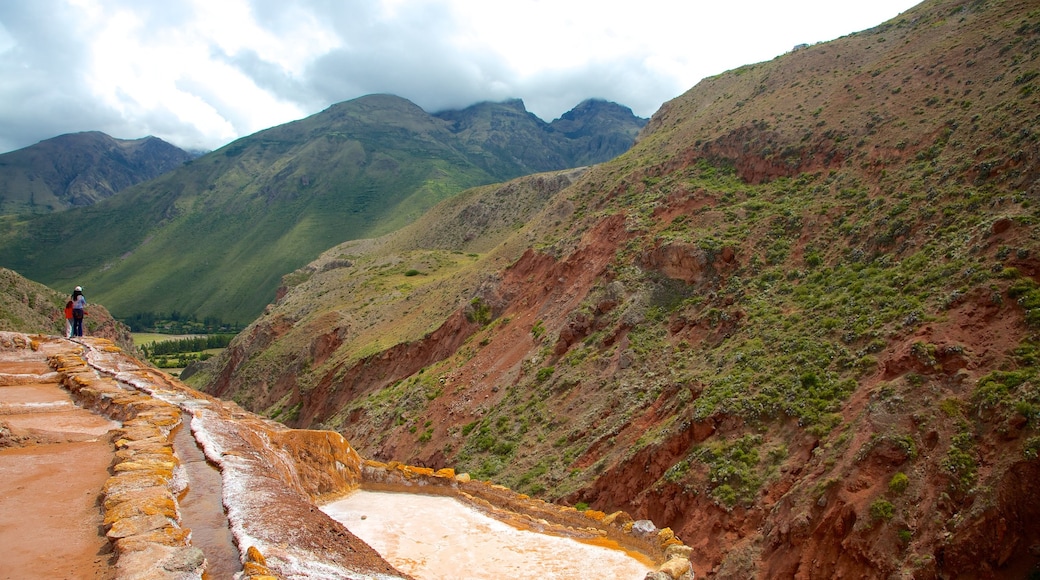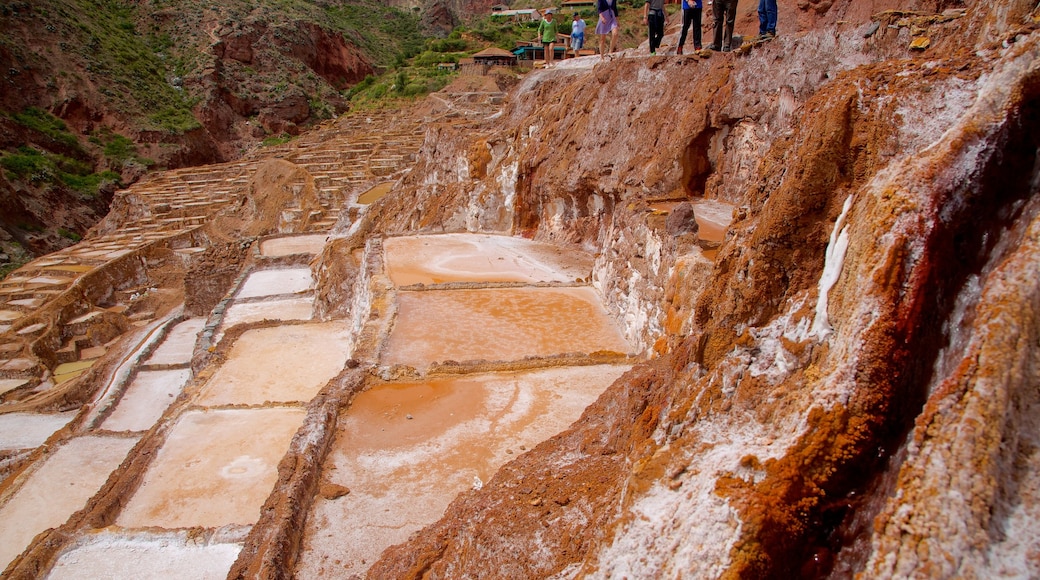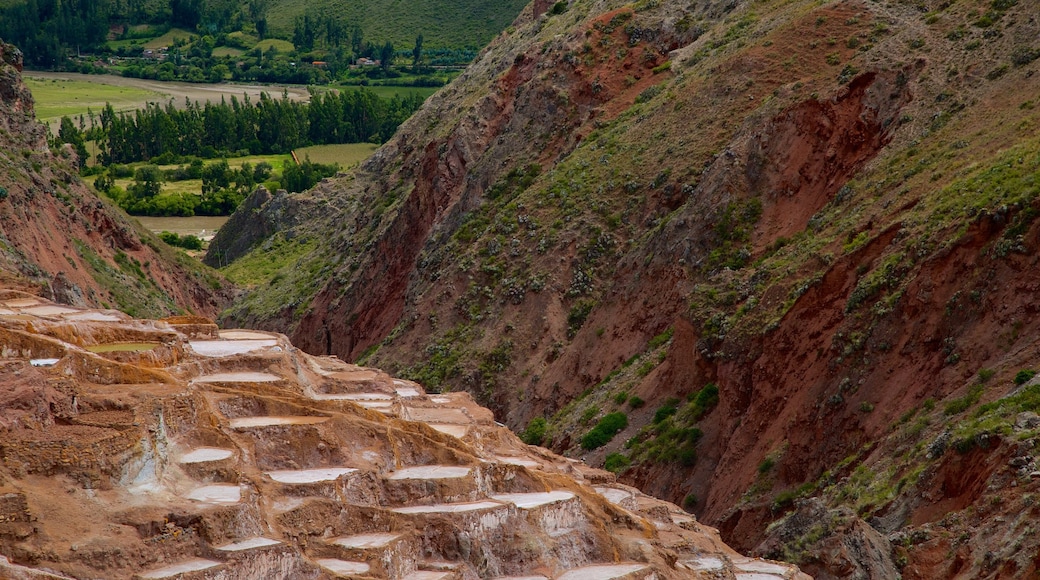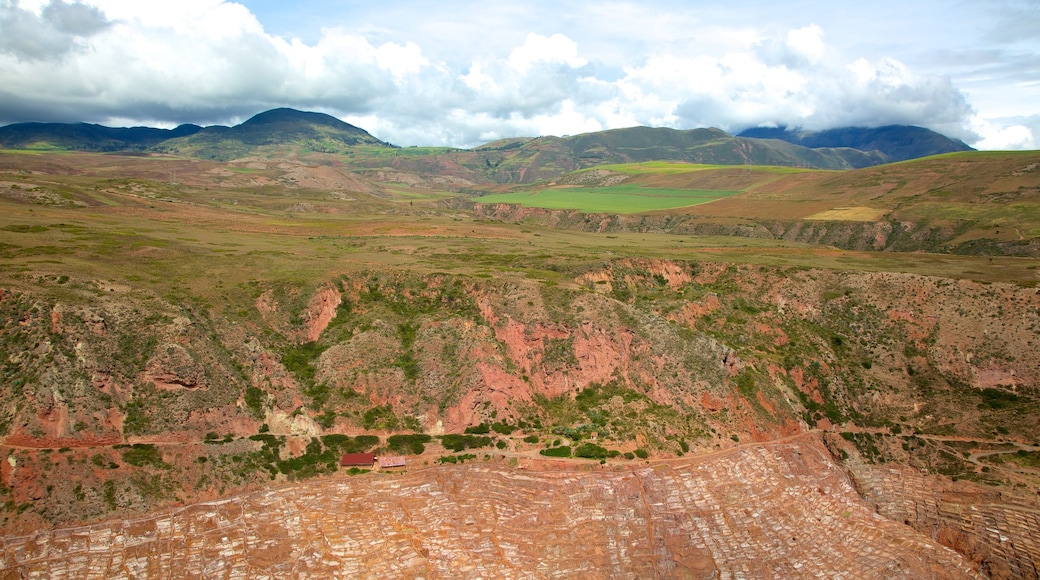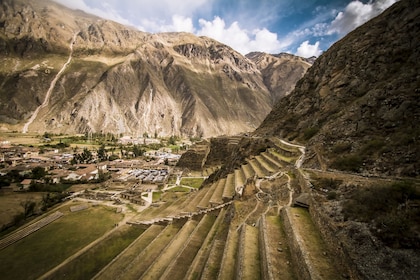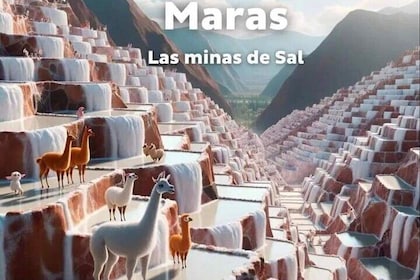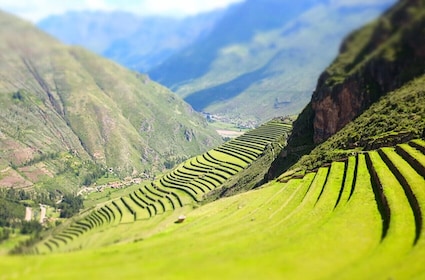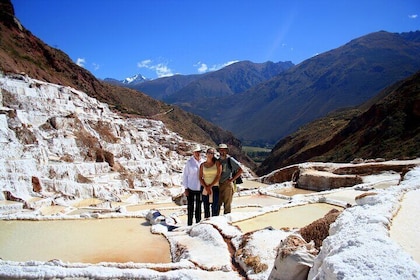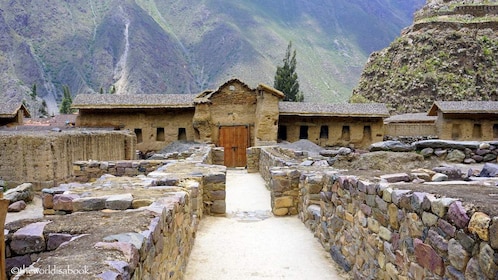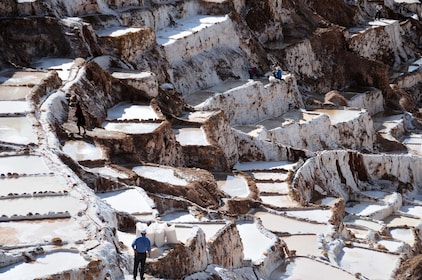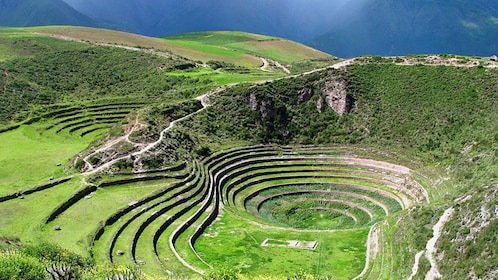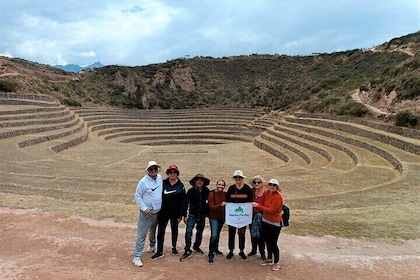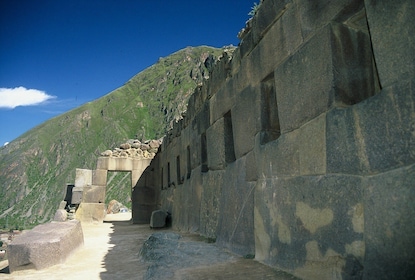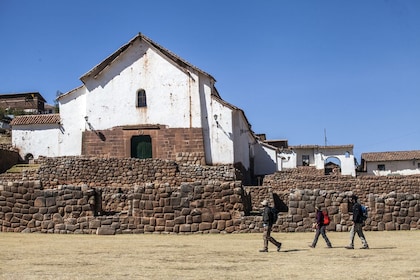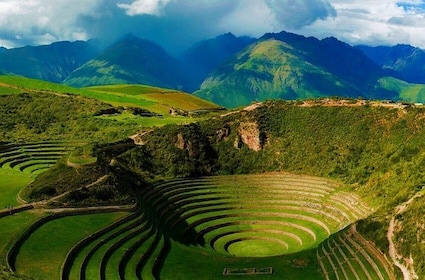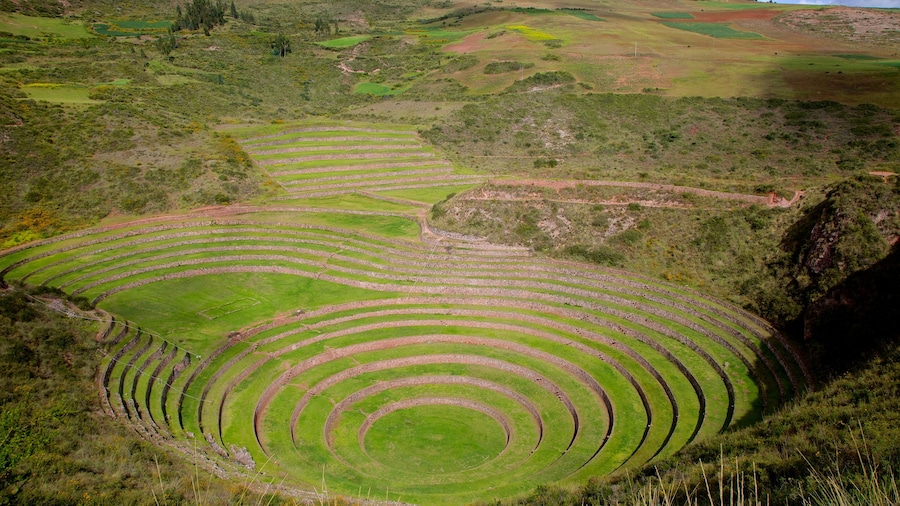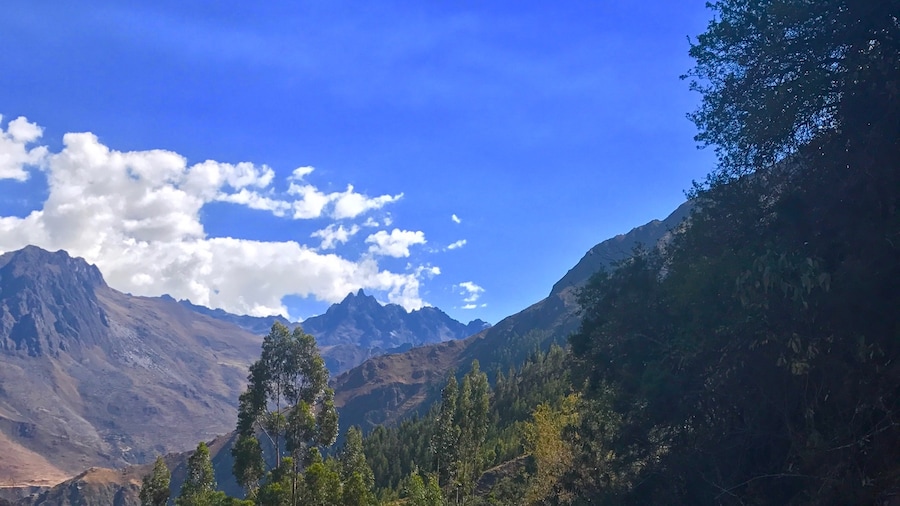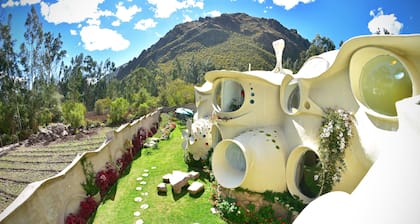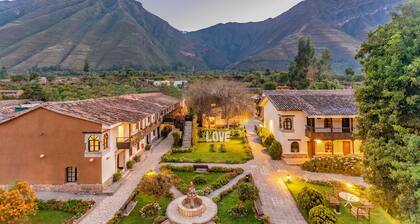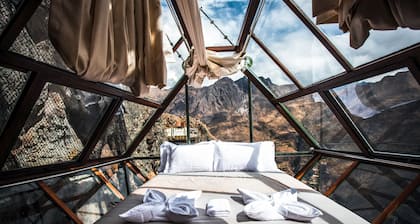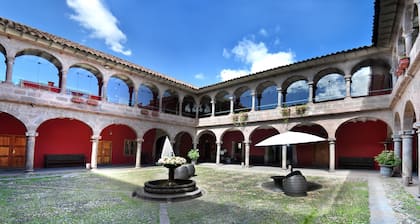The Salt Mines of Maras are a unique group of more than 3,000 working salt pans. With each pool positioned slightly lower than the last on the Andean hillside, the pans give the landscape an unusual and almost ethereal appearance.
Mineral waters feeding the pools originate from the Qoripujio Spring, a naturally salinated river creek found between Ollantaytambo and Cusco. This water is diverted into the man-made pools using rocks. Although the Incas made improvements to the system, it’s believed to have been built hundreds or even thousands of years before their time. Study the striking appearance of the salt pans and admire how this system has continued to work effectively over centuries.
Notice that each pool is 53-107 square feet (5-10 square meters) in size. Once the pool fills with water, workers block the channel, allowing the sun to evaporate the standing water and leave only the salt behind. Try to spot locals scraping the salt from the ground and shoveling it into large bags.
The pools somehow appear to be different shades of yellow, white and brown, despite being fed from the same water source. Look closely and you’ll see crystals of salt forming on the water surface. Expanding in a terrace formation over the hillside with salt crystals sparkling in the sun, the salt pools are quite a striking sight.
In the gift store, purchase a bag of salt as a souvenir. You’ll typically find white cooking salt, which has been processed to remove traces of other minerals pink salt, a favorite among Peruvians for bathing and adding a unique flavor to cooking and mineral-rich brownish or yellowish salt for bathing.
Find the Salt Mines of Maras north of Maras, which is located 25 miles (40 kilometers) north of Cusco in the Sacred Valley of the Incas. There is an admission fee to see the salt pools. The mines are particularly interesting from May to December when evaporation is at its highest.

